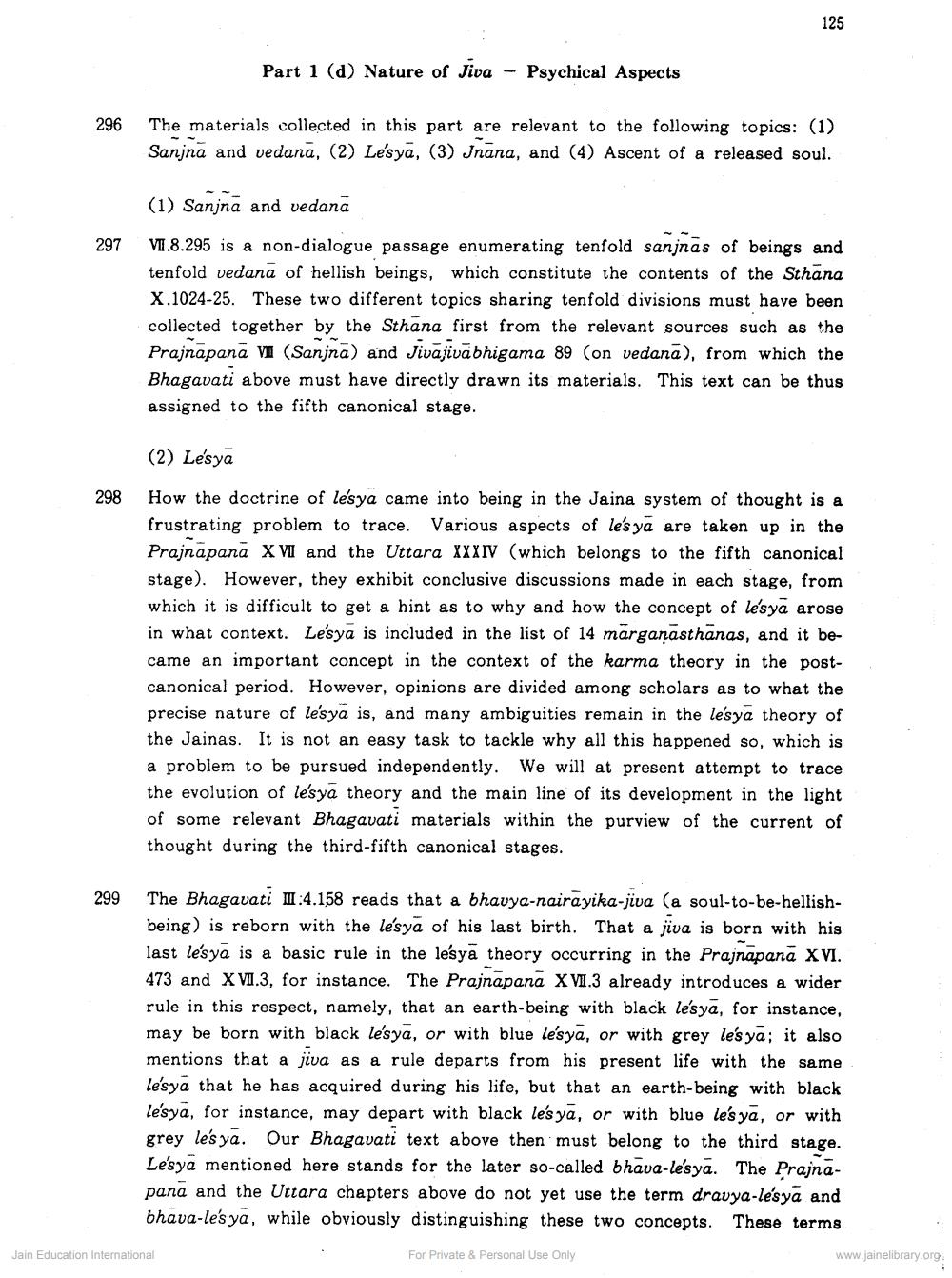________________
296
297
298
299
Part 1 (d) Nature of Jiva
Psychical Aspects
125
The materials collected in this part are relevant to the following topics: (1) Sanjna and vedana, (2) Lesya, (3) Jnana, and (4) Ascent of a released soul.
(1) Sanjna and vedana
VII.8.295 is a non-dialogue passage enumerating tenfold sanjñās of beings and tenfold vedana of hellish beings, which constitute the contents of the Sthana X.1024-25. These two different topics sharing tenfold divisions must have been collected together by the Sthana first from the relevant sources such as the Prajnapana (Sanjna) and Jivajivabhigama 89 (on vedana), from which the Bhagavati above must have directly drawn its materials. This text can be thus assigned to the fifth canonical stage.
Jain Education International
(2) Lesya
How the doctrine of lesya came into being in the Jaina system of thought is a frustrating problem to trace. Various aspects of lesya are taken up in the Prajnapana XVII and the Uttara IIIIV (which belongs to the fifth canonical stage). However, they exhibit conclusive discussions made in each stage, from which it is difficult to get a hint as to why and how the concept of lesya arose in what context. Lesya is included in the list of 14 marganasthanas, and it be came an important concept in the context of the karma theory in the postcanonical period. However, opinions are divided among scholars as to what the precise nature of lesya is, and many ambiguities remain in the lesya theory of the Jainas. It is not an easy task to tackle why all this happened so, which is a problem to be pursued independently. We will at present attempt to trace the evolution of lesya theory and the main line of its development in the light of some relevant Bhagavati materials within the purview of the current of thought during the third-fifth canonical stages.
The Bhagavati II:4.158 reads that a bhavya-nairayika-jiva (a soul-to-be-hellishbeing) is reborn with the lesya of his last birth. That a jiva is born with his last lesya is a basic rule in the lesya theory occurring in the Prajnapana XVI. 473 and XVII.3, for instance. The Prajnapana XVI.3 already introduces a wider rule in this respect, namely, that an earth-being with black lesya, for instance, may be born with black lesya, or with blue lesya, or with grey lesya; it also mentions that a jiva as a rule departs from his present life with the same lesya that he has acquired during his life, but that an earth-being with black lesya, for instance, may depart with black le'sya, or with blue les ya, or with grey lesya. Our Bhagavati text above then must belong to the third stage. Lesya mentioned here stands for the later so-called bhava-lesya. The Prajnapana and the Uttara chapters above do not yet use the term drauya-lésya and bhava-lesya, while obviously distinguishing these two concepts. These terms
For Private & Personal Use Only
www.jainelibrary.org.




